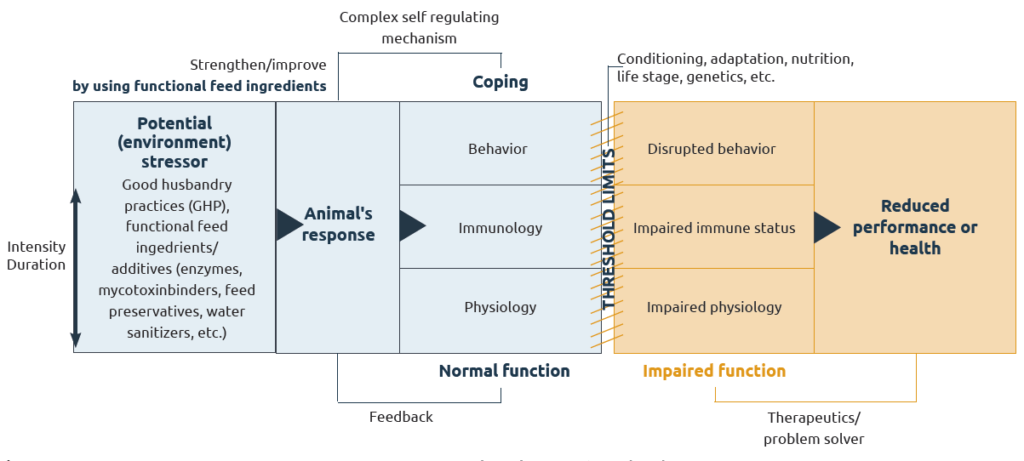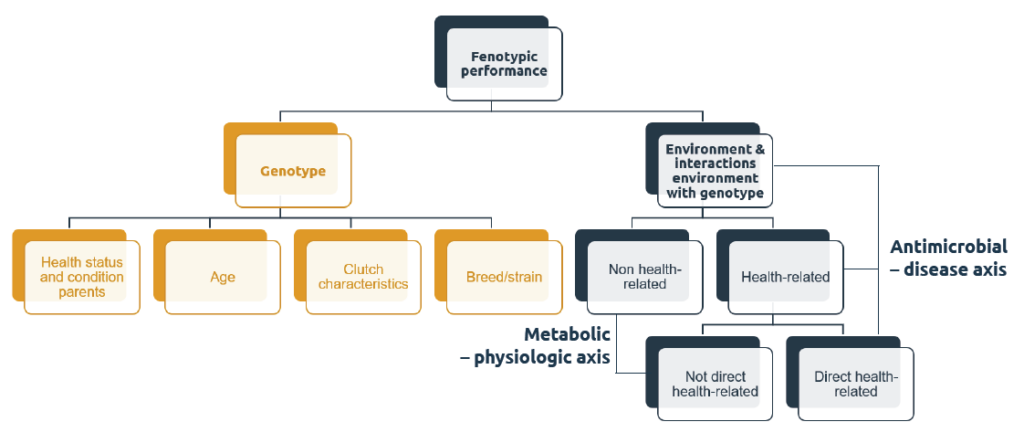By Jan Vervloesem (Global Poultry Category Manager)
With a growing world population, that is expected to reach close to 10 billion by 2050, sustainable and safe food production is becoming a big challenge not only to the authorities but all of us. The resources to produce eggs and meat will become more scarce, which means efficiency needs to be further improved to meet the estimated 25% population growth.
Rightly questioned by consumers and authorities, the time to rely on antibiotics to solve several diseases, mortality, and performance problems in the poultry industry is drawing to a close. For decades, antimicrobial growth promotors (AGPs) were used by the industry to improve efficiency and food safety. However, today, antimicrobial resistance (AMR) is becoming a major global issue that is not only affecting poultry production but— with millions of deaths annually—is also influencing the human population. This evolution is the reason for the call to no longer use AGPs and antibiotics in livestock production.
Antibiotic-free poultry production
In 2006, Europe banned AGPs in feed. This resulted in an explosion of new additives and functional feed ingredients (FFIs) in the market trying to replace the role of AGPs. It was soon clear that trying to replace one product with another non-AGP product (claiming to have a similar/antibacterial mode of action) was not sufficient. The industry quickly learned that replacing AGPs requires a solid and complete strategy. One that can be adapted based on region and even, depending on the objectives of the situation, company. Now, as of this year (2022), the prophylactic use of antibiotics in livestock production is forbidden in Europe as well. So once again, new alternative strategies and concepts will need to be developed to safeguard efficiency and food safety.
Strategies for replacing AGPs and reducing the use of antibiotics
Breeding companies and integrations work side by side to improve efficiency, reduce the pressure on the climate and environment, improve the well-being and health of the animals as well as contribute to safe food production.
The principle of combined responsibility for efficient, sustainable, and safe poultry production

Back in 1984, Hahn and Becker described the responses of animals to environmental stressors. Based on their view, it is clear that replacing AGPs requires both a preventive strategy to manage the environment as well as a biological strategy to strengthen the animal/improve the threshold limits. The ability to achieve both can improve efficacy to minimize the cost of response.
Poultry has natural “self-regulating” mechanisms to respond to stress: behavior, the immune system, and physiological adaptations. Of course, these mechanisms need maintenance and energy, which comes at a cost of increased feed conversion or reduced weight gain. The type of stressor, duration, intensity, and physical condition of the animal will determine if the bird can cope with the stress and if the performance of the animal, wellbeing, or food safety will be affected.
Reducing the risk of stress
Since they helped lower the impact of stress, replacing AGPs requires a stringent preventive strategy to reduce the risk of environmental stressors. This implies good husbandry practices (GHP)—like handling, climate control, and stocking densities—are more important than ever, as well as the inclusion of functional feed ingredients (FFIs) and additives to help control mycotoxins, preserve the feed, disinfect the water, improve feed digestibility, and an adapted feeding strategy (lower protein, more fiber).
Performance is determined by the interaction between genotype and environment

bacteria, viruses, fungi, and microspores. The metabolic-physiologic axis implies both direct and non-direct health-related
issues. These two axes cover most of the activities related to general management as well as nutritional strategies, feed quality,
and growth profiles that affect physiological needs.
Strengthening the animal
At the same time as reducing stress, the animal needs to be conditioned in order to cope better and/or longer with stressors. By working on the quality of the day-old chicks and improving the health status of parent stock—which is mainly done by stimulating the development and activity of the intestinal tract, modulating the immune system, increasing the anti-oxidative activity, and creating a balanced microbiome —the bird is stronger.
Conclusion
The transition to AGPs and antibiotic-free poultry meat production started almost two decades ago and will be continued over the next several decades. Some countries and companies have taken the lead in this, others follow slowly. Today the knowledge to replace AGPs and antibiotics in daily poultry production is available and successfully practiced by many companies. In order to succeed, define the right strategy, focus on relevant stressors, and understand the needs of poultry to produce meat efficiently, sustainably, and safely. Agrimprove can, together with you, farm ideas that fit your needs.